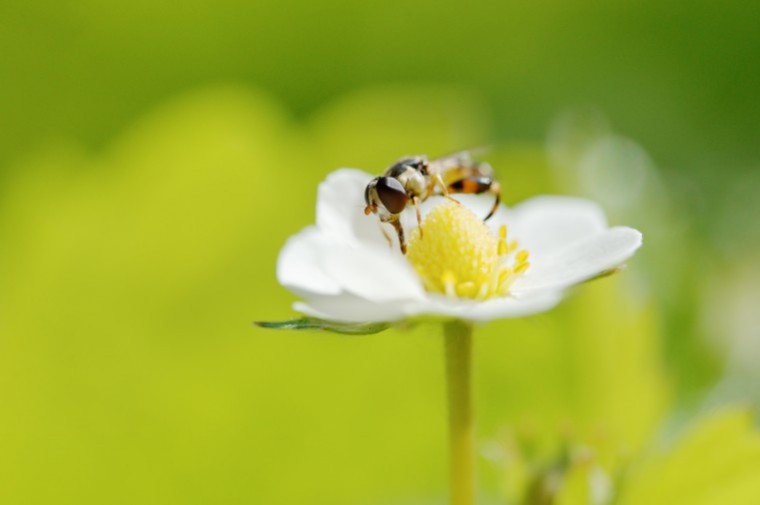Scientists at NIAB EMR in Kent have found that strawberry plants in cages visited by syrphine hoverflies produced at least 70% more strawberries than cages without the insects.
But hoverflies are among the 67% of invertebrate species monitored in the UK which are in decline, according to the RSPB’s state of nature report published in 2016.
“There are so many factors involved in inverterbrate decline,” said Paul Hetherington, director of fundraising and communications for Buglife, the invertebrate conservation trust. “One is climate change and another is loss of habitat. The lack of connectivity between habitats means that if something bad happens in one area, the insects cannot get away to a good area.”
Hedgerow loss and the use of herbicides, which tend to make arable fields very monoculture, have a role in the decline, Mr Hetherington said. “The fields look very green but there are not many flowers. A recent report from the British Beekeepers Association found that bees in an urban environment were producing more honey per hive than bees in a rural environment. That says something about the lack of flowers.”
NIAB EMR said strawberry growers should encourage more hoverflies into their crops as they act as both pollinators and natural aphid predators.
Some of the UK’s 260 – odd native hoverfly (Syrphidae) species visit strawberry flowers as adults, but also eat aphids during the larval stage. But whether aphid eating hoverflies were able to pollinate strawberry flowers effectively had remained largely unknown until now.
NIAB EMR said that with concerns over a decline in numbers of wild pollinator insects, the results could pave the way for new crop management practices that benefit hoverflies and commercial strawberry growers.
Dr Michelle Fountain, deputy head of pest and pathogen ecology at NIAB EMR, said: “This is the first time that the pollination role of hoverflies in strawberries has been quantified. We also compared two hoverfly species, and found that one species (Eupeodes latifasciatus) was nearly twice as effective at producing marketable fruit as the other (Episyrphus balteatus), demonstrating that hoverfly species may also differ in their pollination efficacy.
“Using these results, we can look in more detail at the ecological requirements of the key hoverfly species and potentially implement specific wild flower strips that will help boost their numbers in strawberry crops.”
Mr Hetherington said that some hoverfly species were doing well: the hornet hoverfly, for example, has benefited from the warmer climate and seems to be moving further North. But climate change can mean that when hoverflies should be hibernating, they stay active and then there is not enough food for them. “If they are hibernating and it is damp, that can encourage moulds to grow.”




